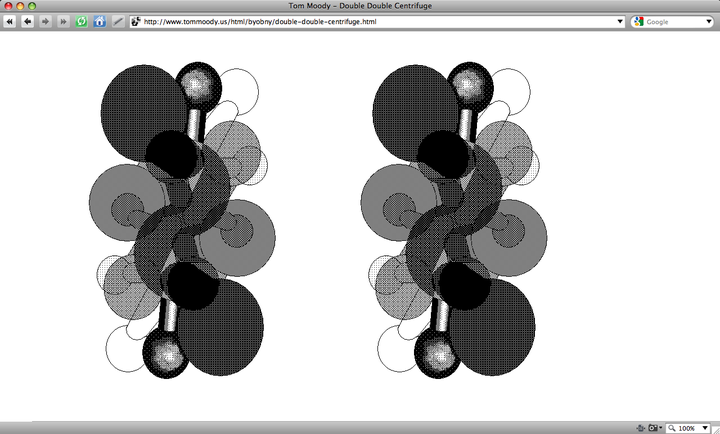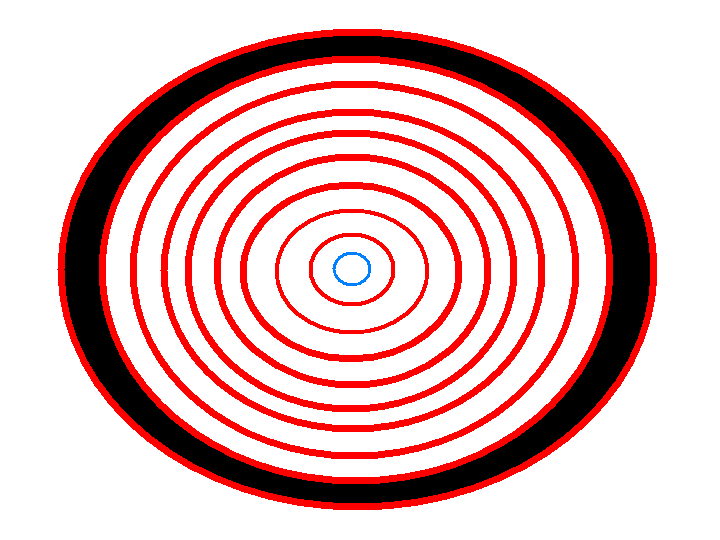Issue 1/2012 - Net section
Mini-cinema in self-experience mode
On the role of »animated GIFs« (Graphics Interchange Formats)
Flashing webpage buttons, arranged in a grid, endlessly repeating background motifs in grid arrangements, navigation tools, list symbols and above all the construction worker digging away in hundreds of variations, tirelessly demonstrating that the website you’ve just visited is »under construction«. They’re small, don’t require a licence and above all they’re animated and they’re everywhere: Graphics Interchange Formats, also known as GIFs. » Animated GIFs have evolved over the last several years into a kind of ubiquitous ›mini cinema‹ entirely native to the personal computer and the World Wide Web«, writes New York-based artist Tom Moody, who is one of a group of users who don’t see the short animations as just an annoying part of navigating through the Web, but view them instead as a Net culture phenomenon and indeed as an artistic phenomenon. » Almost anyone can make one and almost every browser will read them. In other words, no YouTube compression, no wait time, no subscriptions or proprietary formats to view, and they can be made in the most elementary and cheap imaging programs. GIFs are the purest expression of the democratic web and along with JPEGs and PNGs comprise its most authentic visual language.«1
GIFs, which have existed since 1987, have the edge as a file format over JPGs or PNGs partly due to the type of image compression, but above all in the way in which several individual documents can be brought together to form a document and set in motion. Animated GIFs treat every single frame as a level within one and the same image. When producing animated GIFs, a display time is defined for each image, with one frame either entirely replacing the next or being superimposed upon it. The sequence is generally presented as an endless loop.
The visual language of animated GIFs, which Olia Lialina and Dragan Espenschied describe as »digital folklore« or »demotic Web« arises out of a bewildering mixture of »online-amateur culture, digital DIY electronics, dirtstyle, typo-nihilism, memes, teapots, penis enlargements «2. Take a look at »OptiDisc«3 and »Double Double Centrifuge«4, two of the numerous works by Tom Moody circulated on the Web, and the function of animated GIFs in an artistic context becomes clearer. »OptiDisc« is made up of 18 individual frames and depicts ten red ellipses arranged concentrically; the animation makes them turn blue, with the colour moving from the inside to the outside and back to the centre again, whilst the spaces between them become filled with black in a counterpoised – and equally pulsating – movement. In contrast, the animated GIFs in »Double Double Centrifuge« are made up of only eight individual images, but here we find two double centrifuges arranged parallel to each other, and creating a moiré effect with a range of grey tones and various surface textures as they rotate on their own axis. The type of phenomena we usually find annoying when surfing – a permanently flickering background image, a rotating globe when a commercial firm wants to depict its global network, or body parts that grow and shrink to promote an advertising promise of two more centimetres – are presented by Tom Moody as contemplative elements and associated with the work on framing to be found in experimental film, the psychological framework of Op-Art or scientific visualisation methods – in other words, with the visual language of Modernism.
When animated GIFs are discussed from the perspective of art theory or cultural theory, analyses are generally reduced simply to the content of the images, the type of movement or their societal role in the context of numerous other Web culture phenomena. Seeking to counteract this, author Sally McKay explores the qualities of these short animations in terms of perception theory and realises that because viewers are in such close proximity to their screens, animated GIFs end up being » simultaneously ›in your face ‹ and in your mind, their affects continuous with the immersive experience of daily internet use«. Quoting philosopher Brian Massumi, she compares the intensity with which animated GIFs are perceived to a state of suspense »like a temporal sink, a hole in time «.5 The focus is on the brief moment before action is taken, and before emotions develop. In animated GIFs, the gaps in action between frames contribute to this sense of suspense: brief enough to suggest motion, but long enough to create a gap in perception.
Numerous art practices today repeatedly confront viewers with the conditions of their own perception, in a fashion comparable to the non-linear movement of a loop. One of the aspects responsible for this is repetition, which also enters into play in animated GIFs through their presentation as an endless loop, and provides a vector to articulate political demands. This persistence in an endless loop and interruption of the quotidian chain of perception arising from patterns of repetition is, as Diedrich Diederichsen notes, »not a disappointing process because it leads back to its own beginning. It is the same thing, experienced at least twice by me. It is objectively the same and hence it is a possibility to observe the changes in my experiencing subjectivity, to have a second-order experience of change«6 – and hence to distance oneself from the normative classification criteria of everyday life.
A further consideration arises from a socio-political point of view, namely that the paradigm of repetition is indeed pushed to extremes by artistic avant-gardes, in order to »position repetitive, mechanical, standardised procedures […] against essentialist precepts of originality, uniqueness and the unity of the work«7. The project »GIF MARKET«8 developed by Kim Asendorf and Ole Fach plays with this openness of forms of expression in Net art, whose material, the digital code, contradicts the principle of uniqueness. The collector-oriented project, composed of a simple Web site, comprises a series of 1,024 animated GIFs, each with its own number. The series begins with number 1 at the top left of the page, where a single black pixel rotates around a line in the centre of the moving image, in the second GIF there are two pixels, and in the third, three – the game continues right up to 1,024 at the bottom of the page. As the number ascribed to each GIF goes up, the number of pixels grows, yet the possibility of distinguishing between the individual animations diminishes in parallel. Number 1 is treated as the most expensive artwork, as it comprises just one rotating pixel and is thus held to show the highest degree of originality. The project’s calculation is based on a formula, which is also responsible for ensuring that over the course of time the value of the first GIF levels off at 16,384 Euro, as all the other works are gradually sold: the price is computed from the number of sales, divided by the number of the GIF and multiplied by 16. Kim Asendorf and Ole Fach position their project »on the way to the future. It's not on the destination, much more shortly after the start, but it's one of the pioneer projects for giving files a value«.9. It remains to be seen to what extent this kind of model for the marketability of animated GIFs will become established on the art market, as so far the two artists have only sold a few pixel animations with a price tag higher than 100 Euro – most cost between 2.61 and 2.53 euros.
Translated by Helen Ferguson
1 Tom Moody, IMG MGMT: Psychotronic GIFs (2008), http://www.artfagcity.com/2008/08/05/img-mgmt-psychotronic-gifs
2 Dragan Epenschied/Olia Lialina, Digital Folklore: To Computer Users, with Love and Respect. Merz Akademie 2009, http://digitalfolklore.org
3 Tom Moody, OptiDisc (2005), http://www.tommoody.us/html/byobny/optidisc_whitebkgrd.html
4 Tom Moody, Double Double Centrifuge (2004–2010), http://www.tommoody.us/html/byobny/double-double-centrifuge.html
5 Sally McKay, The Affect of Animated GIFs, Art & Education, September 2009, http://www.artandeducation.net/paper/the-affect-of-animated-gifs-tom-moody-petra-cortright-lorna-mills
6 Diedrich Diederichsen, Eigenblutdoping. Cologne 2008, p. 35.
7 Sabeth Buchmann, Wiederholung ist nicht, was sich wiederholt, in: Sabeth Buchmann et al. (ed.), Wenn sonst nichts klappt: Wiederholung wiederholen. Hamburg/Berlin 2005, p. 72.
8 Kim Asendorf/Ole Fach, GIF MARKET (2011), http://gifmarket.net
9 http://kimasendorf.com/gifmarket/README

